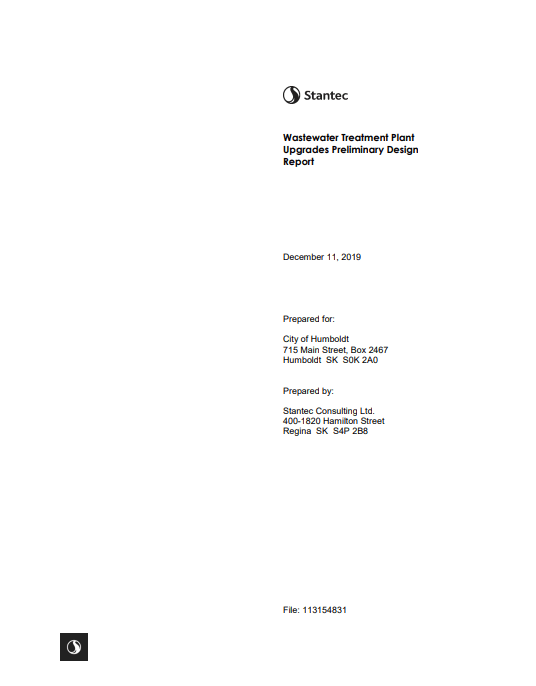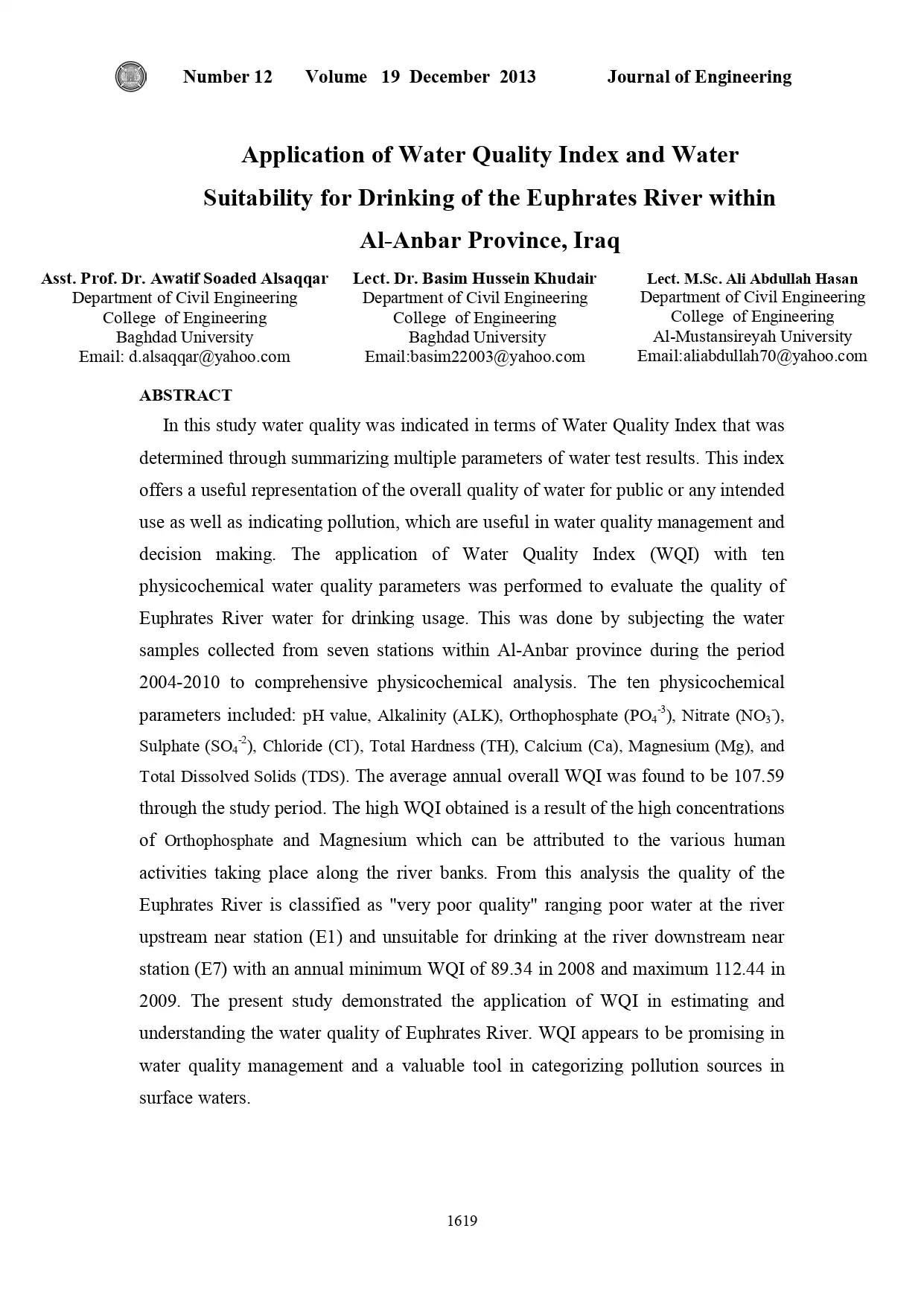Wastewater Treatment Plant Upgrades Preliminary Design Report
Usually dispatched in 2 to 3 days
Usually dispatched in 2 to 3 days
Category:
Drinking Water Treatment
Only logged in customers who have purchased this product may leave a review.
Related products
An Integrated Photoelectrochemical Zero Liquid Discharge System for Inland Brackish Water Desalination
Surging population, energy demands, and climate change will push us, ever more urgently, to find new approaches to meet growing water demands. Most often, this will involve harvesting lower quality or impaired water supplies (e.g., seawater or brackish groundwater) as a source for drinking water. Recently desalination using membrane-based processes (e.g., reverse osmosis [RO], electrodialysis [ED], and nanofiltration [NF]) has shown promise for providing additional sources of fresh water across the United States. However, the current membrane separation processes are commonly energy intensive and produce large volumes of concentrated brine which poses unique challenges. Particularly in land-locked urban center brine disposal often relyes on surface water discharge or deep-well injection which pose economic and practical difficulties for wide-spread adoption of such technologies. Thus, there is an urgent need for energy-efficient desalination technologies that reduce the amount of concentrate produced, or identify cost-effective solutions for concentrate management.
An Integrated Photoelectrochemical Zero Liquid Discharge System for Inland Brackish Water Desalination
Surging population, energy demands, and climate change will push us, ever more urgently, to find new approaches to meet growing water demands. Most often, this will involve harvesting lower quality or impaired water supplies (e.g., seawater or brackish groundwater) as a source for drinking water. Recently desalination using membrane-based processes (e.g., reverse osmosis [RO], electrodialysis [ED], and nanofiltration [NF]) has shown promise for providing additional sources of fresh water across the United States. However, the current membrane separation processes are commonly energy intensive and produce large volumes of concentrated brine which poses unique challenges. Particularly in land-locked urban center brine disposal often relyes on surface water discharge or deep-well injection which pose economic and practical difficulties for wide-spread adoption of such technologies. Thus, there is an urgent need for energy-efficient desalination technologies that reduce the amount of concentrate produced, or identify cost-effective solutions for concentrate management.
Biofilm Control Study
Darigold operates a milk products facility in Lynden, Washington. Production processes include evaporation of milk, which generates what is referred to as condensate of whey (COW) water. COW water contains low molecular weight organic compounds including traces of lactic acid, alcohols, acetoin, and non-protein nitrogen (Möslang, 2017). COW water and non-contact cooling water from the Darigold Lynden facility are currently discharged to Outfall 001, which combines with stormwater and the City of Lynden’s wastewater treatment plant (WWTP) effluent discharge to the Nooksack River through the City’s outfall. Darigold’s discharge is regulated under National Pollutant Discharge Elimination System (NPDES) Permit No. WA0002470 administered by the Washington Department of Ecology (Ecology). In the future, Darigold’s COW Water and non-contact cooling water will be directly discharged to the Nooksack River in a new outfall pipe (Outfall 002) currently being constructed by the City.
Biofilm Control Study
Darigold operates a milk products facility in Lynden, Washington. Production processes include evaporation of milk, which generates what is referred to as condensate of whey (COW) water. COW water contains low molecular weight organic compounds including traces of lactic acid, alcohols, acetoin, and non-protein nitrogen (Möslang, 2017). COW water and non-contact cooling water from the Darigold Lynden facility are currently discharged to Outfall 001, which combines with stormwater and the City of Lynden’s wastewater treatment plant (WWTP) effluent discharge to the Nooksack River through the City’s outfall. Darigold’s discharge is regulated under National Pollutant Discharge Elimination System (NPDES) Permit No. WA0002470 administered by the Washington Department of Ecology (Ecology). In the future, Darigold’s COW Water and non-contact cooling water will be directly discharged to the Nooksack River in a new outfall pipe (Outfall 002) currently being constructed by the City.
Biological Biofilm Processes
•Used for removal of organic pollutants from wastewaters
•Biological treatment is popular due to:
–low cost
–effective in removal of a wide range of organic contaminants
–effective in removal of colloidal organics
–can remove toxic non-organic pollutants such as heavy metals
Biological Biofilm Processes
•Used for removal of organic pollutants from wastewaters
•Biological treatment is popular due to:
–low cost
–effective in removal of a wide range of organic contaminants
–effective in removal of colloidal organics
–can remove toxic non-organic pollutants such as heavy metals
Appropriate Technologies For Drinking Water Treatment In Mediterranean Countries
This paper aims at analyzing the drinking water issue in the Mediterranean region, highlighting the principal problems and the appropriate technologies applicable in the different countries. The countries of this area are characterized by a huge variety from social, cultural, economic and environmental point of view. In particular, water distribution is inhomogeneous between the North, East, and South; even the type of water sources and the related quantity and quality problems differ country by country. Potable water comes from brackish and seawater, surface water, groundwater and water reservoirs with each source face different issues. The main problem of brackish and seawater for example is the high salinity and the contamination by disinfection byproducts, in addition to the microbiological and chemical contamination due to human activities that characterize also other surface water sources. Groundwater is also affected by human activity and it is not exempted from salinity because of the water intrusion. Moreover, water reservoirs are often contaminated by seasonal algal blooms. Technologies applied for drinking water treatment vary country by country. The paper presents the main treatment processes
associated with the main water pollutants, according to the Mediterranean region. Case studies of drinking water treatment plants are also analyzed, presenting alternative technologies appropriate for specific contexts, among others. The characteristics of each specific context should be carefully analyzed in order to develop the most appropriate technologies; high-end technologies for drinking water treatment may not be applied equally to all countries or communities of the Mediterranean region.
Appropriate Technologies For Drinking Water Treatment In Mediterranean Countries
This paper aims at analyzing the drinking water issue in the Mediterranean region, highlighting the principal problems and the appropriate technologies applicable in the different countries. The countries of this area are characterized by a huge variety from social, cultural, economic and environmental point of view. In particular, water distribution is inhomogeneous between the North, East, and South; even the type of water sources and the related quantity and quality problems differ country by country. Potable water comes from brackish and seawater, surface water, groundwater and water reservoirs with each source face different issues. The main problem of brackish and seawater for example is the high salinity and the contamination by disinfection byproducts, in addition to the microbiological and chemical contamination due to human activities that characterize also other surface water sources. Groundwater is also affected by human activity and it is not exempted from salinity because of the water intrusion. Moreover, water reservoirs are often contaminated by seasonal algal blooms. Technologies applied for drinking water treatment vary country by country. The paper presents the main treatment processes
associated with the main water pollutants, according to the Mediterranean region. Case studies of drinking water treatment plants are also analyzed, presenting alternative technologies appropriate for specific contexts, among others. The characteristics of each specific context should be carefully analyzed in order to develop the most appropriate technologies; high-end technologies for drinking water treatment may not be applied equally to all countries or communities of the Mediterranean region.
Module 11: Administration of Water Treatment Plants
• Describe how water treatment plants comply with their minimum federal and state monitoring requirements.
• List the three ways in which management ensures that the staff complies with monitoring requirements.
• Discuss reporting requirements when complying with federal and state regulations.
Module 11: Administration of Water Treatment Plants
• Describe how water treatment plants comply with their minimum federal and state monitoring requirements.
• List the three ways in which management ensures that the staff complies with monitoring requirements.
• Discuss reporting requirements when complying with federal and state regulations.
Application of Water Quality Index and Water Suitability for Drinking of the Euphrates River within Al-Anbar Province, Iraq
In this study water quality was indicated in terms of Water Quality Index that was determined through summarizing multiple parameters of water test results. This index offers a useful representation of the overall quality of water for public or any intended use as well as indicating pollution, which are useful in water quality management and decision making. The application of Water Quality Index (WQI) with ten physicochemical water quality parameters was performed to evaluate the quality of Euphrates River water for drinking usage. This was done by subjecting the water samples collected from seven stations within Al-Anbar province during the period 2004-2010 to comprehensive physicochemical analysis.
Application of Water Quality Index and Water Suitability for Drinking of the Euphrates River within Al-Anbar Province, Iraq
In this study water quality was indicated in terms of Water Quality Index that was determined through summarizing multiple parameters of water test results. This index offers a useful representation of the overall quality of water for public or any intended use as well as indicating pollution, which are useful in water quality management and decision making. The application of Water Quality Index (WQI) with ten physicochemical water quality parameters was performed to evaluate the quality of Euphrates River water for drinking usage. This was done by subjecting the water samples collected from seven stations within Al-Anbar province during the period 2004-2010 to comprehensive physicochemical analysis.
Recommended Standards for Water Works
A Report of the Water Supply Committee of the Great Lakes--Upper Mississippi River Board
of State and Provincial Public Health and Environmental Managers
Recommended Standards for Water Works
A Report of the Water Supply Committee of the Great Lakes--Upper Mississippi River Board
of State and Provincial Public Health and Environmental Managers
Advancing Water, Sanitation and Hygiene (WASH) in Panchayats
Access to safe drinking water is critical to survival, and its deprivation could affect the health, food security, and livelihoods of human beings. India achieved 93% coverage of access to improved water supply in rural areas in 2015 towards fulfilling its commitment under the Millennium Development Goal1. However, with reference to safely managed drinking water (improved water supply located on-premises, available when needed and free of contamination) as per Sustainable Development Goal, India still has major targets to achieve, and is geared up to accomplish the same by the end of 2024. With the shift from the Millennium Development Goals (MDGs) to the Sustainable Development Goals (SDGs) less than half of the total rural households in the country have access to safely managed drinking water (improved water supply located on-premises, available when needed and free of contamination).
Advancing Water, Sanitation and Hygiene (WASH) in Panchayats
Access to safe drinking water is critical to survival, and its deprivation could affect the health, food security, and livelihoods of human beings. India achieved 93% coverage of access to improved water supply in rural areas in 2015 towards fulfilling its commitment under the Millennium Development Goal1. However, with reference to safely managed drinking water (improved water supply located on-premises, available when needed and free of contamination) as per Sustainable Development Goal, India still has major targets to achieve, and is geared up to accomplish the same by the end of 2024. With the shift from the Millennium Development Goals (MDGs) to the Sustainable Development Goals (SDGs) less than half of the total rural households in the country have access to safely managed drinking water (improved water supply located on-premises, available when needed and free of contamination).















Reviews
There are no reviews yet.